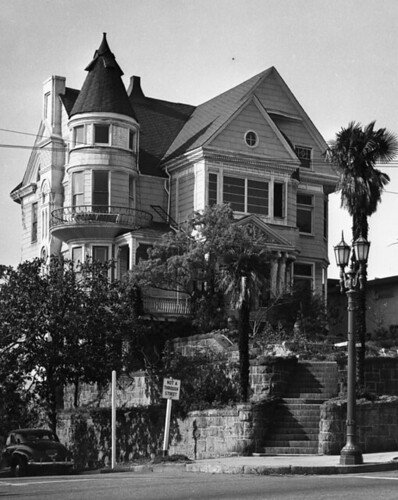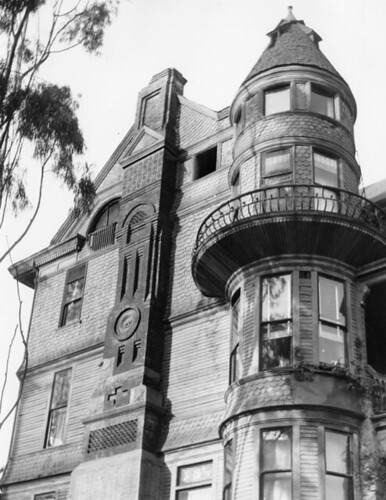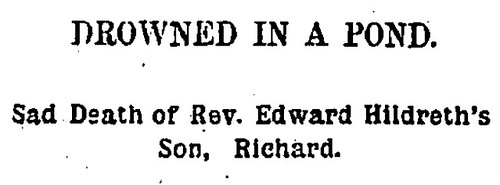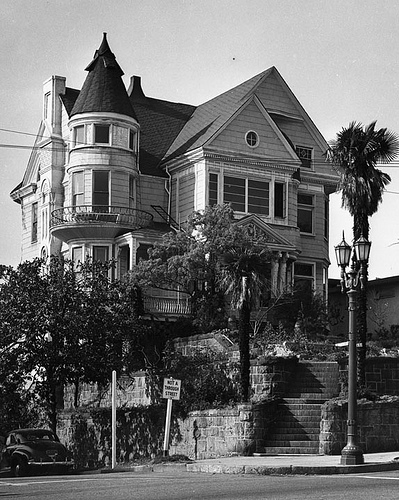
The mansions of Bunker Hill were sometimes inhabited by colorful characters who provided the neighborhood with mayhem, madness or just plain entertainment. Others, like the Hildreth Mansion at the corner of Fourth and Hope led a peaceful, if sometimes melancholy existence, standing as the graceful pillar of a lost era until the wrecking balls came.
The residence that stood at 357 South Hope Street for over sixty years was built by Reverend Edward T. Hildreth, a Congregational minister and graduate of the Chicago Theological Seminary. Built in 1889 and designed by JC Newsom, the defining features of the Victorian Shingle style home were an ornate chimney and wrought iron circular balcony on the tower. Located at the northwest corner of the intersection, the exterior of the elevated house was finished off with a stone retaining wall and steps leading up the entrance.


Happiness in the Hildreth household was short lived. In 1893, the Reverend’s youngest son Richard drowned in a nearby watering hole, and his body was brought back to the family residence after it was recovered. Edward and his wife Sarah soon made plans to donate an organ to the First Congregational Church as a memorial to their son, but instead the gift came to commemorate mother and child when Sarah suddenly died in October 1895. Reverend Hildreth never completely recovered from the double loss, and the beloved minister was cared for by his daughter Faith until he passed away at the Hope Street residence in 1907. One year later, the Reverend’s young daughter/caretaker died inside the house of an undisclosed illness.

The mansion soon became a boarding house and stenographers, salesmen, teachers, real estate agents, carpenters, janitors, iron workers, seamstresses and many others passed through its doors. By 1939, the eighteen rooms of the house had been converted into nine residences. Boarders paid between thirteen and thirty-five dollars a month in rent and had lived in the mansion anywhere from one to twelve years. With the exception of the eighty-seven year old resident who was killed in an auto accident in 1940, the boarders of the once stately home lived a quiet existence and dried laundry on the grand wrought iron balcony.
By 1954, the Hildreth Mansion was but a beautiful memory, destroyed by the CRA’s visions of urban renewal.
All photos courtesy of the Los Angeles Public Library Photo Collection

